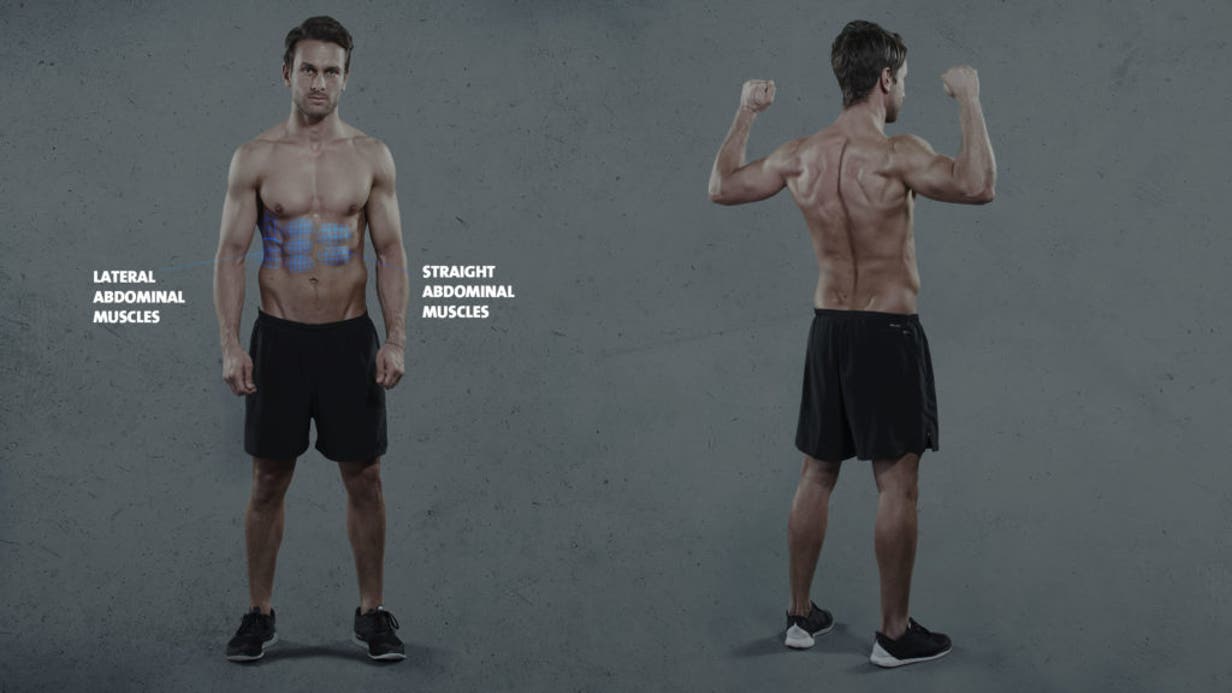What are Situps?
Situps are by far the most well-known abdominal exercise. The basis of this exercise is to elevate the upper body off the floor and forward from an outstretched, lying position. For the starting position, you lie flat on your back. Your hands touch the floor behind your head and your legs are bent in the ‘butterfly position’. As you complete the movement, the upper body straightens up into a sitting position, until the hands touch the ground in front of your feet. At this point, the upper body reclines back into the starting position.
The ultimate ab exercise
Sit-ups activate the abdominal muscles directly. Aside from the hip flexor (PSOAS major) and the deeper lying and oblique stomach muscles, the highest workload is placed on the rectus abdominis. The rectus abdominis (or the abs) is actually a single muscle which is attached to the sternum and extends down to the pelvis, divided by several sinewy and long strips of six to eight segments. The forward and upwards movement works the rectus abdominis muscle along its entire length, a relatively isolated exercise as this muscle ususally works in a supportive and stabilizing role in other movements. This is why no other exercise works the abdominals so intensely.

Situps for a strong and stable core
Situps are essential for strong core muscles. The core is literally the center of your body to which all the other muscles are attached; if the center of the body is weak, then the whole body suffers. Back pain and joint problems, even in other parts of the body, may be a result of a weak core as the core muscles support the spinal column and the intervertrebral discs. This is why well-trained athletes are far less likely to suffer from neck and back pain or headaches. In addition to this, the strength in your core muscles can affect your performance in other Freeletics exercises. A strong core is not only important for Squats, Pushups and steady-paced running, but also for explosive movements such as sprinting or Jumps. Essentially, for any full-body exercise, the core muscles are always activated first.
Why the butterfly position?
The butterfly position means bending your legs and tilting them outwards. When doing Situps in the butterfly position, the range of motion is much greater than when done with raised legs, meaning that you can touch the ground in front of your feet. This last part of the movement is when the core muscles are worked the hardest. Situps are therefore even more effective for your abdominal muscles when done in the butterfly position.
Let's recap:
Even after just a few repititions, when done correctly, Situps will ensure that the abdominals work hard. This is a very effective core exercise which can quickly induce muscle fatigue. But don't worry; because the abdominal muscles have the quickest recovery time of any muscle group in the body. And as with any other muscle group that is directly targeted when exercising, you might hate it while doing, but love it afterwards.